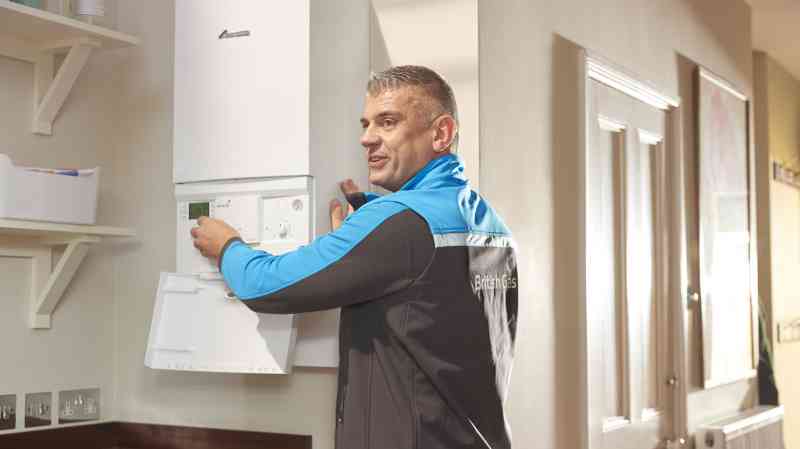If you can’t beat ’em, join ’em. After years of losing customers to cut-price rivals, Centrica, the owner of British Gas, now seems to accept it cannot rely on lazy or loyal customers paying sky-high prices to prop up profits for its bloated supply operations for ever (Emily Gosden writes).
Nursing the bruises from a hefty kick in the right direction from the government, which capped standard tariffs early last year, the supplier is pursuing a radical cost-cutting drive with the bold goal of becoming “the lowest-cost supplier by 2022”.
It’s the right aim and, if Centrica can deliver, it could yet vindicate Iain Conn’s decision in 2015 to focus the group on its customer-facing businesses, of which British Gas is core. But it’s going to be a long old slog to get there.
British Gas, which supplies 7 million households, declared a cost to serve of £109 per UK energy customer last year, out of a gross margin of £128 per customer — a figure significantly reduced by the price cap. Despite its protestations against the policy, it still made a 2 per cent ebit margin, or £137 million profit.
But to preserve and even boost those figures, it cannot count on wishing the price cap away: it needs to cut costs. It’s aiming to get its costs down to about £85 per customer by the end of next year, requiring more painful job-cutting and shaking up its bureaucratic customer service operations.
To get closer to the £70-a-customer cost, its target for the end of 2022, will also require shifting to a new IT platform, a process fraught with risk. In the meantime, it needs to stem the exodus of customers to retain the benefits of economies of scale. That means offering cut-price deals, which are barely making any money until its costs come down — a tactic that has slowed, but is yet to halt, the losses.
One bright spot is that British Gas can make money by cross-selling bundled deals with more profitable services products, including boiler repair, an area showing some growth: services profits were up 31 per cent to £264 million. However, such products won’t appeal to all of its supply customers and competition in services is growing. Its overambitious growth plans for its “connected home” products have been retired.
To deliver real growth, the efficiency drive and improved IT systems will need to be replicated across all areas of Centrica’s customer-facing businesses, including in North America, where competition is strong. And in all these fields, there’s no guarantee at the end of it that Centrica’s offering can necessarily outperform those of nimble upstart rivals.
The non-consumer elements of the business Mr Conn wants to offload— its nuclear plant stake and Spirit Energy, its oil and gas business — are continuing to drag on the business. It took heavy writedowns on both yesterday, while plunging gas prices contributed to a profit warning for 2020. With cracks in the reactors and the low price environment, both sales face challenges.
Tempus first said to “avoid” Centrica shares in April 2017 when they were worth more than £2, and has reiterated that advice since, most recently in May 2018. Several more profit warnings, a dividend cut and a chief executive ousting (though he remains in post pending a replacement) later, the shares closed at 71¾p yesterday, yielding 7 per cent.
Are they now so cheap as to be worth buying? If they fall much further, it’s not hard to imagine someone buying the entire group and breaking it up properly. But absent that, real recovery entails a long, hard slog to attempt to deliver a highly uncertain growth strategy, with the added bonus of no clarity yet over who will be leading the efforts.
Advice AvoidWhy Growth prospects and leadership remain uncertain
GraingerBoosting home ownership might be the centrepiece of Boris Johnson’s housing strategy but Britain’s biggest private sector landlord thinks that it will also benefit under his administration (Louisa Clarence-Smith writes).
Grainger, the FTSE 250 company, completed a £187 million share placing yesterday to invest in regions where government infrastructure investment is expected to support rental growth. It placed 61.2 million shares at 305p per share, a discount of 2.3 per cent to the closing price on Wednesday but at a 12.1 per cent premium to its net asset value.
Including additional debt of about £120 million based on the company’s loan-to-value target range, this will generate about £305 million to drive an acquisition spree, including projects in Nottingham, Birmingham, Cardiff and London.
Grainger was a first mover in the growing market for professionally managed homes for rent after an exodus of landlords who sold when higher stamp duty was introduced.
It has a portfolio of about 9,000 flats valued at £2.6 billion and a pipeline of 9,000 more around the country. It does not reveal its average rents but targets the mid-market.
Grainger is well placed to benefit from the demand for rented homes. Home ownership among young adults has started to increase thanks to the Help to Buy scheme, yet the proportion of households in England renting privately has doubled over the past two decades. With annual house price growth rising since the general election, there is no sign of affordability improving and the number of households renting privately is forecast to rise.
The company expects to increase its net rental income by £16 million when the new schemes funded by the placing have been completed and leased, which it predicts will deliver an extra 0.69p to the dividend per share. This year, it expects continued dividend per share growth.
The share placing will also support economies of scale. Grainger has built a platform able to invest in, develop and manage rental developments that is not widespread throughout the UK. Bringing those capabilities together creates a greater amount of upside for investors.
Advice BuyWhy Larger portfolio will boost income and earnings
